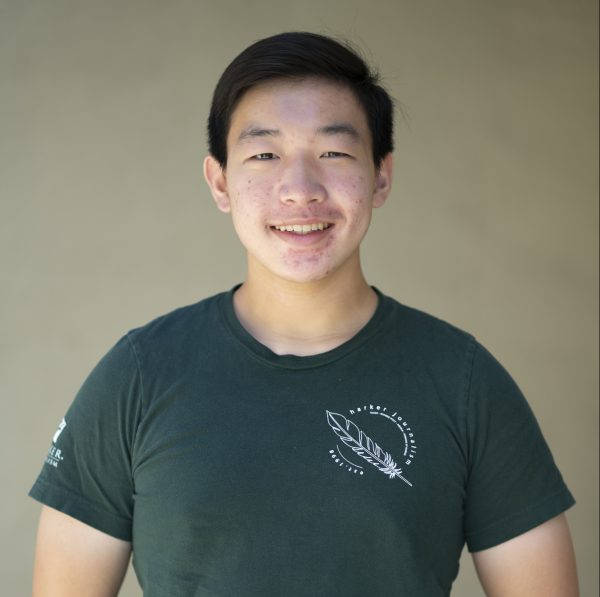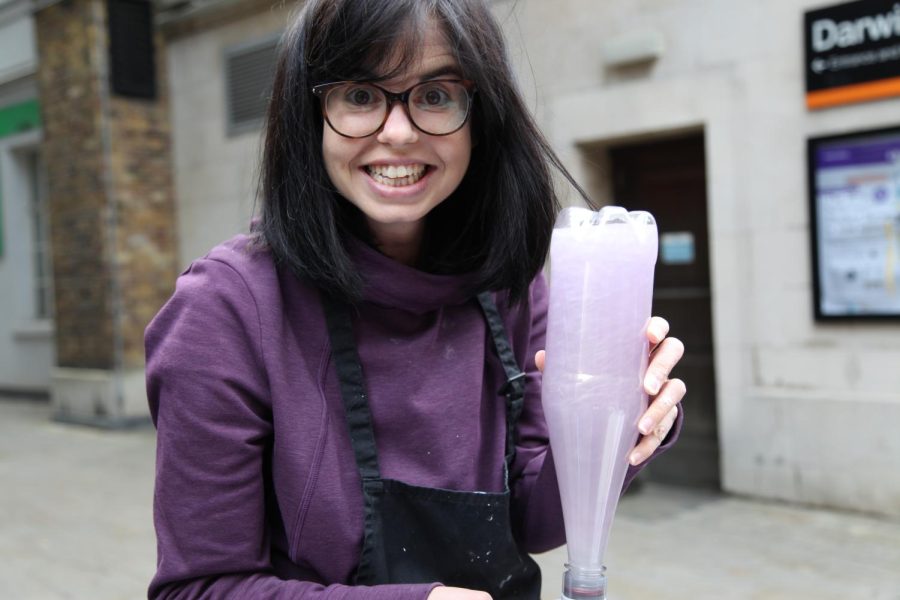Empowering the past, present and future generations of women in STEM
Physicist Dr. Jess Wade writes over 1750 Wikipedia bios for female scientists
In 2018, British physicist and research fellow Dr. Jess Wade sat down and started to draft a Wikipedia article about American climate scientist Kim Cobb. Noticing Cobb’s outstanding achievements which never received any recognition, Dr. Wade made it her mission to bring her and others’ achievements to light, publishing her first collection of over 1,750 articles featuring overlooked female scientists and scientists of color.
Dr. Wade’s path to STEM was an unconventional one; before studying physics at Imperial College London, she attended an art school where she learned about Renaissance artists’ exploration of engineering and architecture. Inspired by their innovation in building cathedrals and developing stained glass, Dr. Wade carried that fundamental concept into her future studies and career in physics.
“During my physics degree, I was introduced to this concept that you can use materials and innovation and to create new technologies,” Dr. Wade said. “That really excited and inspired me, that we could use some fundamental design and discovery for something that had societal good.”
Now, Dr. Wade works at the Blackett Laboratory in Imperial College London, creating carbon-based semiconductors for electrical devices using quantum technology. During her time at university, Dr. Wade recalls witnessing the sheer diversity in the people she worked with, causing her to fall in love with STEM and grow into her roles as a lecturer and professor.
“I never really planned to have a career in academic science, but now I can’t really imagine doing anything else,” Dr. Wade said.
Dr. Wade started her project writing Wikipedia articles for underrepresented female scientists in 2018, gradually balancing out the male-dominated content. Noticing the vast contributions of female scientists that often escaped public recognition, Dr. Wade strived to document their work and unearth their achievements.
“When I started editing biographies on Wikipedia, only 17% of them were about women,” Dr. Wade said. “So according to Wikipedia, only 17% of the notable people on planet Earth were women, which really bummed me out. Then, when you look closer at that, it’s pretty much all white women. There were very few female engineers or engineers of color at all.”
Despite working at Blackett Laboratory for the majority of her day, Dr. Wade makes sure to publish a new Wikipedia article every day after returning home, no matter how exhausted she is. She writes about both past scientists and current ones, determined to both learn about female achievements in the field and shed light on their discoveries.
“I always have my scheduled Wikipedia time, because I find it so soothing and calming to have this time where I know what I’m going to do,” Dr. Wade said. “I really love being able to keep a better record of who scientists are and what they’re doing today.”
Dr. Wade finds new scientists to write about either by researching women whose names don’t have a substantial amount of info attached to them. Amongst the hundreds of articles written, Dr. Wade holds a few special in her heart. For instance, Indian-American material scientist and inventor Sumitra Mitra created nanomaterials utilized in billions of dental procedures around the world to this day. Similar to Mitra who never received proper recognition for her work, American spy Elizabeth Sudmeier was of the first members of what would become the Central Intelligence Agency (CIA) in the late 1970s to 1980s. Sudmeier’s legacy as one of the first to address the gender pay gap intrigued Dr. Wade and led her to publish the Wikipedia article. Another of Dr. Wade’s favorites include 21st century American physician Yvette Calderon, who revolutionized HIV research, but Dr. Wade’s greatest pride comes with her article on American mathematician Gladys West. Appalled at how little information existed about West, Dr. Wade published her Wikipedia page. No sooner than a few months later, BBC announced that West joined their 2018 “100 Women” list followed by The Guardian conducting an interview with West.
With the women in STEM movement gaining rapid pace, Dr. Wade hopes to shift the focus slightly through her work. While there are a myriad of programs and organizations working to empower young women and encourage them to enter the world of STEM, with a female dropout rate in STEM of 23%, Dr. Wade wishes for the public to make more efforts to keep women already in the field in STEM. Through her work highlighting women from different backgrounds, Dr. Wade aims to ensure the importance of past and present women while instilling hope and confidence in future ones.
“There have been lots of campaigns to get more women and more people of color into science, but I don’t think we’re doing enough to look after the ones we already have,” Dr. Wade said. “ We’ve certainly done enough for some parts of the movement, and there’s definitely been enough conversation around this, but I hope to see more action being taken to support the members of those minority groups.”

Edward Huang (12) is a co-managing editor for the Winged Post, and this is his fourth year on staff. This year, Edward wants to continue creating unique...

Kinnera Mulam (12) is the co-editor-in-chief of the Winged Post, and this is her fourth year on staff. This year, Kinnera hopes to get to know all the...


















![“[Building nerf blasters] became this outlet of creativity for me that hasn't been matched by anything else. The process [of] making a build complete to your desire is such a painstakingly difficult process, but I've had to learn from [the skills needed from] soldering to proper painting. There's so many different options for everything, if you think about it, it exists. The best part is [that] if it doesn't exist, you can build it yourself," Ishaan Parate said.](https://harkeraquila.com/wp-content/uploads/2022/08/DSC_8149-900x604.jpg)




![“When I came into high school, I was ready to be a follower. But DECA was a game changer for me. It helped me overcome my fear of public speaking, and it's played such a major role in who I've become today. To be able to successfully lead a chapter of 150 students, an officer team and be one of the upperclassmen I once really admired is something I'm [really] proud of,” Anvitha Tummala ('21) said.](https://harkeraquila.com/wp-content/uploads/2021/07/Screen-Shot-2021-07-25-at-9.50.05-AM-900x594.png)







![“I think getting up in the morning and having a sense of purpose [is exciting]. I think without a certain amount of drive, life is kind of obsolete and mundane, and I think having that every single day is what makes each day unique and kind of makes life exciting,” Neymika Jain (12) said.](https://harkeraquila.com/wp-content/uploads/2017/06/Screen-Shot-2017-06-03-at-4.54.16-PM.png)








![“My slogan is ‘slow feet, don’t eat, and I’m hungry.’ You need to run fast to get where you are–you aren't going to get those championships if you aren't fast,” Angel Cervantes (12) said. “I want to do well in school on my tests and in track and win championships for my team. I live by that, [and] I can do that anywhere: in the classroom or on the field.”](https://harkeraquila.com/wp-content/uploads/2018/06/DSC5146-900x601.jpg)
![“[Volleyball has] taught me how to fall correctly, and another thing it taught is that you don’t have to be the best at something to be good at it. If you just hit the ball in a smart way, then it still scores points and you’re good at it. You could be a background player and still make a much bigger impact on the team than you would think,” Anya Gert (’20) said.](https://harkeraquila.com/wp-content/uploads/2020/06/AnnaGert_JinTuan_HoHPhotoEdited-600x900.jpeg)

![“I'm not nearly there yet, but [my confidence has] definitely been getting better since I was pretty shy and timid coming into Harker my freshman year. I know that there's a lot of people that are really confident in what they do, and I really admire them. Everyone's so driven and that has really pushed me to kind of try to find my own place in high school and be more confident,” Alyssa Huang (’20) said.](https://harkeraquila.com/wp-content/uploads/2020/06/AlyssaHuang_EmilyChen_HoHPhoto-900x749.jpeg)



